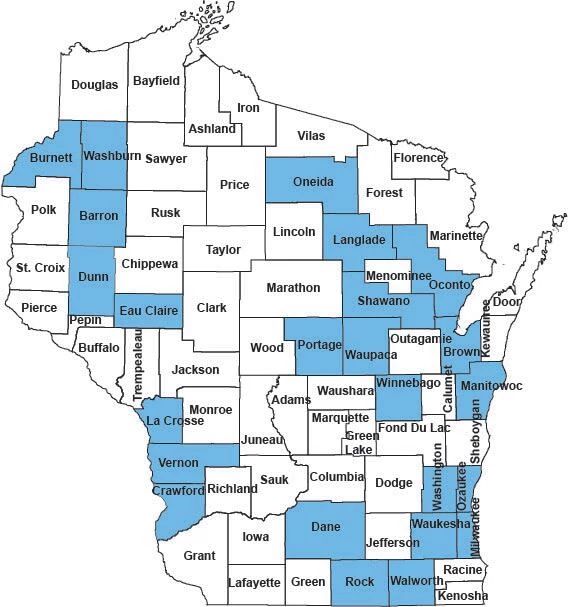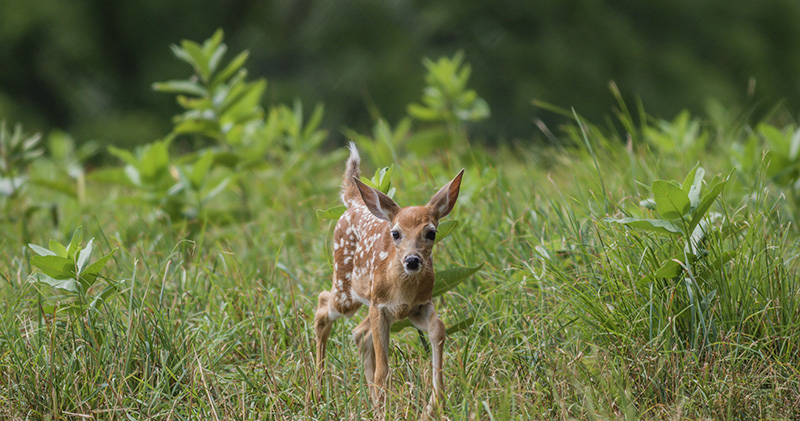Wildlife Rehabilitation Resources and Directory
In Wisconsin, you must be licensed to conduct wildlife rehabilitation. It is defined as providing care or treatment to an orphaned, sick or injured wild animal for the purpose of releasing it back into the wild. Under state law, no person may rehabilitate any wild animal except as authorized under a rehabilitation license.
You can help reserve space for wild animals truly in need by always calling a licensed wildlife rehabilitator before assuming a wild animal needs help. In some cases, wildlife rehabilitators may temporarily modify how they can assist injured, orphaned, or sick wildlife to protect human and wildlife health and safety.
Most wild animals are protected under state and federal laws and cannot be taken from the wild or possessed by unauthorized citizens. Raising a wild animal as a pet is not only against laws and regulations, but also not doing the right thing for the animal. Wisconsin's captive wildlife regulations allow a citizen to possess a wild animal for up to 24 hours to transfer that animal to an appropriately licensed individual, such as a licensed wildlife rehabilitator or veterinarian. Even though wild animals are cute, they should not be viewed as pets.
Note: Due to concerns about highly pathogenic avian influenza (HPAI), licensed wildlife rehabilitators may have limits or restrictions on admissions of some species. For more information, please visit the Avian influenza webpage.
Wildlife Rehabilitation Directory
The blue counties on the map represent the locations of licensed wildlife rehabilitators.
Select the county name in the table below to verify the specific species and other detailed information for the wildlife rehabilitators located in that county. Wildlife rehabilitators are licensed to rehabilitate specific species and cannot assist with calls or care for wildlife outside their expertise and licensing.
| County | Species |
|---|---|
| Barron | Fox, mink, opossum, raptor, and weasel. |
| Dunn | Coyote, non-passerine, opossum, passerine (songbird), raccoon, raptor, reptile, and rodent/rabbit. |
| Oconto | Raptor. |
| Washington | Raccoon and rodent/rabbit. |
| Brown | All species except bear. |
| Eau Claire | Bobcat, coyote (pups only), fox, mink, opossum, otter, raccoon, rodent/rabbit, young waterfowl, and weasel. |
| Oneida | All species. |
| Shawano | Amphibian, bat, and reptile. |
| Waukesha | All species except bat, bear, felid, mustelid, red fox, and white-tailed deer. |
| Burnett | Raccoon and rodent/rabbit. |
| La Crosse | Long leg wader, non-passerine, opossum, other waterbirds, passerine (songbird), raptor (not licensed for eagle), rodent/rabbit, seabird, short leg wader, upland bird, and waterfowl. |
| Ozaukee | Amphibian, badger, coyote, eagle, fox, raptor, and reptile. |
| Vernon | Raccoon. |
| Waupaca | Raccoon. |
| Langlade | Avian. |
| Portage | Rodent/rabbit. |
| Walworth | Eagle, insectivore, long leg wader, non-passerine, opossum, other waterbirds, passerine (songbird), raptor, rodent/rabbit, seabird, short leg wader, upland bird, and waterfowl. |
| Winnebago | Bat, opossum, raccoon, and rodent/rabbit. |
| Crawford | Raptor. |
| Manitowoc | All species except bat, bear, and reptile; rescue and triage only for eagle. |
| Rock | Eagle and raptor. |
| Washburn | Eagle and raptor. |
| Dane | Amphibian, avian, bat, fisher, mammal (adult), mink, reptile, and weasel. Native species only. |
| Milwaukee | All species except bear and white-tailed deer. Currently at capacity for raccoon kits. |

Determine if a Wild Animal Needs Help
Contact a licensed wildlife rehabilitator immediately if you have determined that a wild animal is sick, injured or truly orphaned. Never attempt to rehabilitate wildlife on your own. Wisconsin's licensed wildlife rehabilitators are specially trained to provide temporary care and treatment to wild animals and release them back into the wild.
Consult Keep Wildlife Wild for detailed resources to help determine if a wild animal is truly orphaned and choose an appropriate course of action.
Many young wild animal species spend most of their day without their mother, who may be away feeding or keeping her distance to protect her young.
Do not provide food or water; this can do more harm than good.
Rehabilitation and SARS-CoV-2
Changes To Wildlife Rehabilitation Procedures
It remains a concern whether SARS-CoV-2, the virus that causes COVID-19 in people, can become established in wild animal populations. Beyond the potential threat to wildlife, this could also threaten human health should the virus become established in the wild and form a reservoir.
To protect against the potential introduction of SARS-CoV-2 into wild animal populations in Wisconsin, the DNR has temporarily modified rehabilitation procedures to safeguard the health of Wisconsinites and wildlife.
This year, there are increased biosecurity requirements for all bat, felid (bobcat), mustelid (weasel species, mink, fisher, otter), red fox and white-tailed deer rehabilitation, and space may be limited. This spring, call a licensed rehabilitator before handling any of these species.
For more information about SARS-CoV-2 in animals, visit USDA APHIS One Health – SARS-CoV-2 in Animals.

